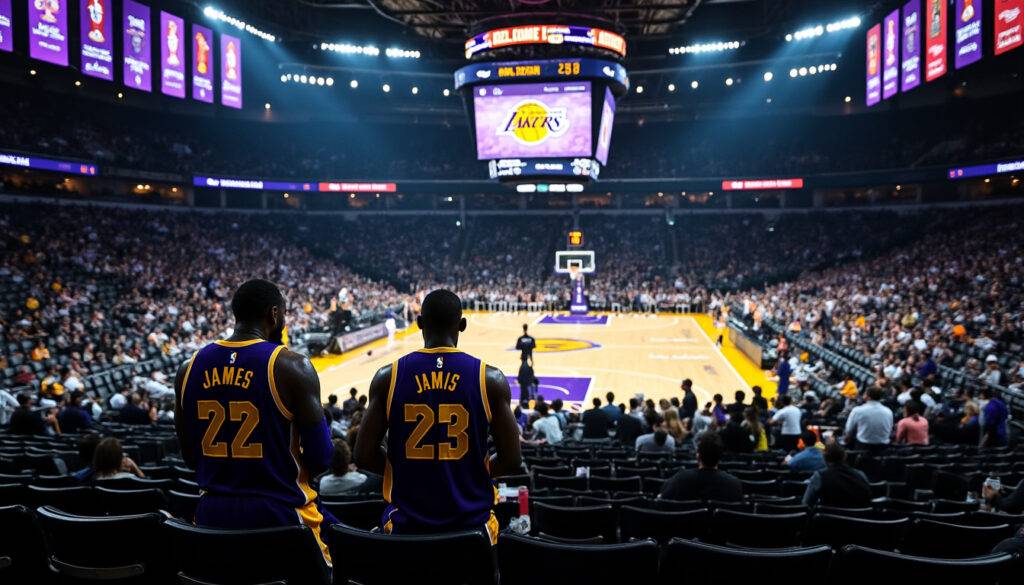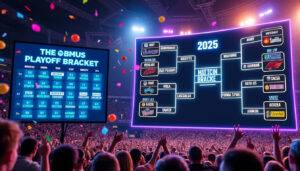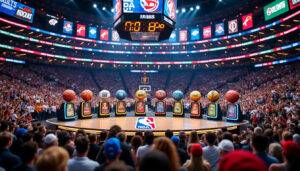The future of the Lakers following their first-round playoff exit

After a dramatic midseason trade that rocked the NBA landscape, the Los Angeles Lakers find themselves at a crossroads. The acquisition of Luka Dončić injected fresh hope and excitement, but their first-round playoff exit at the hands of the Minnesota Timberwolves exposed deep flaws. With LeBron James aging yet still impactful, and Austin Reaves emerging as a critical roster piece, the Lakers face pressing questions about their future strategy. How will they address critical roster gaps, particularly in size, while navigating salary cap restrictions? The clock is ticking on championship aspirations, and with the stakes higher than ever, the Lakers organization must make decisive moves to avoid another early playoff disappointment.
Assessing the Lakers’ Roster Challenges After Early Playoff Disappointment
The Los Angeles Lakers’ 2025 NBA playoffs journey ended abruptly with a 5-game series loss to the Minnesota Timberwolves. This early exit, despite securing the No. 3 seed in the Western Conference, spotlighted glaring weaknesses on the roster. Notably, the absence of a reliable center haunted the team throughout the Timberwolves series, a situation hardly remedied by the current lineup.
Consider these roster truths the Lakers are grappling with:
- Big man deficiency: The trade for Dončić demanded sacrificing Anthony Davis, leaving a vacuum at the center position that rookies like Dalton Knecht and Jaxson Hayes have struggled to fill.
- Dependence on LeBron James: While James continues delivering strong playoff performances, his age (turning 41 in December) is an undeniable limiting factor. The team cannot rely on him for many more seasons.
- Austin Reaves as a pivotal asset: Reaves, a crafty 26-year-old guard, has emerged as possibly the team’s most valuable trade chip, known for his playmaking and shooting capabilities.
- Salary cap constraints: Managing the finances of superstars like Dončić, James, and staying competitive requires creative maneuvering by the front office.
This blend of assets and liabilities sets the stage for a challenging offseason as the Lakers’ management seeks both immediate improvements and long-term sustainability.
Why Austin Reaves Holds the Key to Lakers Roster Evolution
Among all players, Austin Reaves has become the fulcrum of the Lakers’ roster decisions. Despite his $14 million salary being modest by NBA standards, Reaves’ skill set as a guard with creative offense and sharp shooting makes him integral to the team’s style of play. Surprising many, the Lakers resisted moving him even during the Dončić trade, a decision met with skepticism from some Mavericks fans hoping to fill gaps left by Dončić’s departure.
However, with the need to plug the gaping hole at center, parting ways with Reaves might be inevitable:
- Trade value: Reaves is among the Lakers’ only significant trade assets capable of attracting quality rim protectors or rebounders.
- Roster duplication: Dončić and James already provide high-level playmaking; therefore, Reaves’ offensive contributions might be redundant.
- Financial flexibility: Moving Reaves could free up cap space to pursue established big men.
Failing to address the center position, as demonstrated in games against the Timberwolves, leads to dominance at the rim by players like Rudy Gobert. Without a credible big man, championship aspirations remain out of reach.
Future Strategy: Building Around Dončić While Respecting LeBron’s Legacy
With Luka Dončić forming the new nucleus, the Lakers’ future direction is under scrutiny from fans and analysts alike. Dončić’s age and talent promise a generational impact, while LeBron James remains the seasoned superstar pushing the team in his twilight years. The Lakers face tough decisions balancing trophy-chasing now and nurturing long-term success.
Possible strategies include:
- Trade for size: Aggressively pursuing centers like Jakob Poeltl (Toronto Raptors), Walker Kessler (Utah Jazz), or veterans such as Brook Lopez could shore up the frontcourt flaw.
- Player development: Investing in rookies like Dalton Knecht to mature into dependable rotation pieces could offer internal solutions.
- Patience with LeBron: Allowing James’ final seasons to unfold naturally while gradually transitioning to Dončić oversees a balanced approach.
- Targeting disgruntled stars: Leveraging the Lakers’ allure as a prime destination to attract elite players eager for change could reshape the roster.
The challenge will be executing these maneuvers under the constraints of the NBA's strict salary cap and maintaining cohesion in the locker room.
Lessons from Recent Roster Moves and the Impact on Championship Aspirations
The Lakers’ midseason decisions reflect a franchise aiming high but restrained by reality. Trading Anthony Davis, a proven star, was a gamble for future upside with Dončić. Yet, the cost in frontcourt depth remains palpable. Meanwhile, the coaching staff under JJ Redick acknowledged the lack of a trusted center by deploying small-ball lineups, though the consequences were clear against teams like the Timberwolves.
Case in point: Lakers’ playoff struggles versus the Timberwolves (full recap here) highlighted how defensive lapses and absence of size cost them dearly. Even storied veterans like LeBron couldn’t stave off the slide under those conditions.
Restoring the balance on the roster isn’t just about plugging holes — it’s about reigniting championship aspirations and avoiding the pitfalls that have haunted the Lakers’ recent playoff performances. The franchise’s legacy demands urgent and shrewd roster changes to convert potential into tangible success.
How Lakers Management Must Navigate Offseason Moves and Salary Cap Realities
General Manager Rob Pelinka, recently extended in his role, faces no small task ahead. With a narrower salary cap landscape, the usual blockbuster trades or free agent splurges are less feasible. Pelinka must prioritize:
- Retaining key contributors like Austin Reaves unless a suitable center trade materializes
- Exploring veteran acquisitions on limited-term deals, such as Brook Lopez or Clint Capela, to temporarily fill frontcourt gaps
- Utilizing future draft assets, including the unprotected 2031 first-round pick, and swap rights for draft flexibility
- Balancing progression of young players while managing veteran roles effectively
A keen eye for undervalued assets and a willingness to embrace patient roster construction could spell the difference between yet another first-round exit and a real championship push.
Dealing with past challenges—recall how former stars like Russell Westbrook departed, and how the roster reshaped with signings such as D'Angelo Russell returning (read more)—underscores the need for smart moves.
Key offseason priorities for the Lakers’ front office
- Find a reliable center who can defend the rim and rebound effectively
- Maximize Austin Reaves’ value either by extending his contract or trading smartly
- Develop young talent such as Dalton Knecht to expand roster depth and versatility
- Facilitate team chemistry around the new stars Dončić and James
- Formulate a realistic championship timeline that balances immediate competitiveness with sustainable growth

